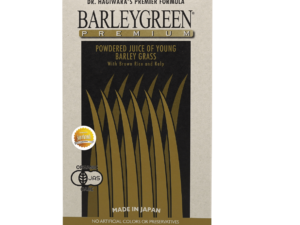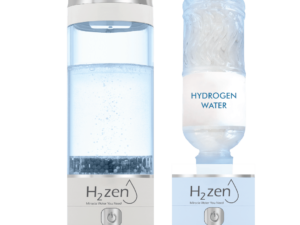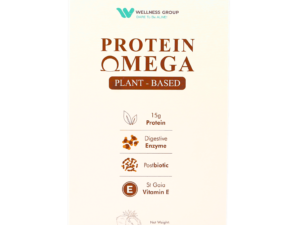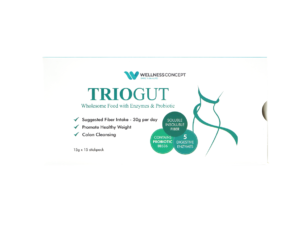Did you know 70% of your immune system resides in your gut? This surprising fact highlights why digestive wellness matters for overall health. Combining fiber and probiotics has become a popular strategy to nurture this vital system, but many wonder how these supplements interact.
Research shows these two nutrients can create a powerful partnership. Fiber acts as fuel for beneficial gut bacteria, while probiotics introduce more of these helpful microbes. Together, they may improve digestion, strengthen immunity, and enhance nutrient absorption.
This guide breaks down the science behind their synergy. Learn how timing, dosage, and individual needs influence results. Practical tips will help you integrate both supplements safely into daily routines.
Key Takeaways
- Fiber and probiotics work synergistically to support digestive function
- Proper timing enhances their effectiveness in gut health maintenance
- Combined use may boost immune system performance
- Individual needs determine ideal dosage and supplement combinations
- Gradual introduction helps minimize potential digestive adjustments
Introduction to Gut Health: The Role of Fiber and Probiotics
Your digestive system functions like a bustling city, with trillions of microorganisms working together. This community, called the gut microbiome, directly impacts energy levels, immunity, and even mental clarity. Maintaining its balance requires two key elements: nourishment for existing bacteria and reinforcements of beneficial strains.

Click to LEARN MORE
Probiotics act as essential workers in this microbial ecosystem. Found in fermented foods like yogurt and kimchi, these live bacteria assist in breaking down nutrients and fighting harmful pathogens. For those managing digestive discomfort, exploring the best probiotics for bloating and gas can provide targeted support.
Meanwhile, fiber serves as the primary energy source for gut microbes. Foods like oats and asparagus contain prebiotic fibers that feed beneficial bacteria, helping them produce vitamins and strengthen intestinal walls. This symbiotic relationship creates optimal conditions for nutrient absorption and waste elimination.
| Component | Primary Role | Common Sources |
|---|---|---|
| Probiotics | Introduce beneficial bacteria | Yogurt, kefir, tempeh |
| Prebiotic Fiber | Feed existing gut microbes | Garlic, onions, whole grains |
When combined strategically, these elements create a self-sustaining cycle of digestive wellness. The right bacterial strains improve fiber breakdown, while adequate fiber intake ensures probiotic survival. This teamwork explains why many health professionals recommend using both for comprehensive gut support.
Understanding Dietary Fibers and Their Prebiotic Benefits
Why do 9 out of 10 adults fall short on essential nutrients that fuel both body and gut? The answer lies in dietary fibers – unsung heroes working behind the scenes of digestion. These plant-based compounds not only regulate bowel movements but also serve as prime nourishment for beneficial gut bacteria.

Types of Dietary Fiber
Two main fiber categories play distinct roles. Soluble fibers dissolve in water, forming a gel that slows digestion and feeds microbes. Think oats absorbing milk or chia seeds plumping up in smoothies. Insoluble fibers act like nature’s broom – wheat bran and vegetable skins add bulk to stool, keeping things moving smoothly.
Among these, prebiotic fibers stand out as specialized microbial fuel. “They’re like fertilizer for your gut garden,” explains nutrition researcher Dr. Aminah Hassan. Inulin from chicory root and asparagus tops the list, doubling as both soluble fiber and premium bacterial food.
Natural Sources of Prebiotic Fibers
Stock your pantry with these gut-friendly options:
- Crunchy alliums: Garlic and onions contain fructooligosaccharides
- Tropical treats: Unripe bananas offer resistant starch
- Global staples: Oats and barley pack beta-glucan
Despite abundant food sources, most Malaysians consume only half their daily fiber needs. Bridging this gap could transform digestive health – one fiber-rich meal at a time.
Understanding Probiotics: Friendly Bacteria for Digestive Wellness
What makes your gut a thriving ecosystem of microscopic allies? Probiotics serve as nature’s maintenance crew, keeping this complex environment balanced. These live bacteria work tirelessly to crowd out harmful organisms while producing essential nutrients.
Common Probiotic Strains
Two bacterial families dominate gut-support formulas. Lactobacillus thrives in fermented foods like yogurt and kimchi, breaking down lactose while boosting immune responses. Bifidobacterium prefers the large intestine, easing IBS discomfort and enhancing nutrient absorption.
Nutritionist Dr. Priya Kaur notes: “Specific strains target different needs – L. acidophilus aids lactose digestion, while B. lactis supports bowel regularity.” Malaysian favorites like tempeh and homemade pickles naturally contain these microbial helpers.
Health Benefits of Probiotics
Regular consumption of beneficial bacteria offers multiple advantages:
- Reduces bloating and gas through improved food breakdown
- Strengthens intestinal walls against harmful pathogens
- Produces mood-regulating compounds like serotonin precursors
Refrigerated supplements maintain bacterial viability, ensuring these microscopic allies arrive ready for action. For optimal results, pair them with fiber-rich meals that feed both existing and new gut bacteria.
Can I take fiber and probiotics together?

Have you ever wondered about combining gut-supporting nutrients for maximum benefit? This strategic pairing forms the basis of microbiome therapy – a modern approach to digestive wellness. While probiotics function effectively alone, research shows their impact multiplies when supported by prebiotic fibers.

Click to LEARN MORE
The CDC confirms commercial prebiotics probiotics together pose minimal risks for healthy adults. “These combinations create a symbiotic environment,” notes gastroenterologist Dr. Emily Tan. “The fibers act as fertilizer, helping probiotic strains establish colonies more effectively.”
- Synergistic effects enhance nutrient absorption and microbial diversity
- Gradual dosage increases prevent temporary gas or bloating
- Combined use often improves bowel regularity faster than single supplements
For those exploring prebiotic-probiotic combinations, timing matters. Consuming fiber-rich meals with probiotic supplements allows immediate fuel for incoming bacteria. Many users report better digestive comfort within weeks compared to using either supplement alone.
Start with quarter doses of both nutrients, increasing weekly as tolerance develops. This method gives the gut time to adapt to increased microbial activity. Pairing a morning probiotic with an afternoon fiber supplement often yields optimal results without overwhelming the system.
“Microbiome therapy represents the future of personalized nutrition – we’re not just adding bacteria, but creating the perfect environment for them to thrive.”
How Fiber and Probiotics Work Together to Support Gut Health
What makes your digestive system operate like a well-oiled machine? The answer lies in the powerful collaboration between fiber and probiotics. These nutrients form a dynamic duo that strengthens gut function through complementary biological processes.
Mechanisms of Interaction
Prebiotic fibers serve as premium fuel for microbial activity. When consumed with probiotics, these carbohydrates undergo fermentation – a process where beneficial bacteria break down fiber into short-chain fatty acids. These compounds act as cellular energy sources while regulating intestinal pH levels.
Three key molecules drive this process:
- Acetate: Enhances nutrient absorption
- Propionate: Regulates appetite signals
- Butyrate: Repairs intestinal lining
Synbiotic Effects Explained
The combined use creates a self-reinforcing cycle. Probiotics multiply faster when supported by adequate fiber intake, while their metabolic byproducts improve conditions for gut flora diversity. This synergy explains why many health benefits of probiotics become more pronounced with proper fiber consumption.
| Component | Primary Function | Key Benefits |
|---|---|---|
| Dietary Fiber | Feeds gut microbes | Produces anti-inflammatory compounds |
| Probiotics | Enhances microbial diversity | Strengthens intestinal barrier |
Regular consumption of synbiotic combinations can transform digestive wellness. These partnerships not only improve nutrient processing but also help maintain balanced microbial populations – crucial for long-term gut health maintenance.
Integrating Fiber and Probiotics into Your Diet Safely
Many people struggle to balance their diet with nutrients that support both immediate needs and long-term wellness. Strategic integration of gut-friendly elements requires understanding individual requirements and daily rhythms.
Dosage and Timing Tips
Begin with modest amounts to let your body adapt. A probiotic starter dose of 1 billion CFUs paired with 22-28g daily fiber for women (28-34g for men) creates a gentle foundation. Take supplements with meals – probiotics thrive when shielded by food, while fiber works best with hydration.
Morning routines often yield better consistency. Pair a probiotic breakfast with an afternoon fiber boost to spread out digestive support. Always chase fiber capsules with a full glass of water to ease digestion.
Dietary Recommendations for Various Lifestyles
Keto enthusiasts can source fiber from chia seeds and avocado while using spore-based probiotics. Paleo followers might prioritize fermented vegetables and Jerusalem artichokes. Those on low-FODMAP plans should opt for partially hydrolyzed guar gum and specific Bifidobacterium strains.
Dietary adjustments become simpler when aligned with existing eating patterns. A vegetarian might combine flaxseed with tempeh-based probiotics, while busy professionals could use timed-release fiber capsules with shelf-stable bacterial blends.
“Personalization trumps generic plans – match supplements to your plate, not the other way around.”
Consult healthcare providers before overhauling your supplement routine, particularly if managing chronic conditions or medications. Gradual changes paired with proper hydration help maintain comfort during transitions.
Potential Side Effects and Considerations
Starting a new supplement routine often comes with unexpected reactions. While synbiotic blends support gut health, the body may need time to adjust to increased microbial activity. Temporary changes in digestion are common during this adaptation phase.
Understanding Common Responses
Mild side effects like gas or bloating frequently occur initially. Some people experience constipation or loose stools as gut bacteria balance shifts. These symptoms typically fade within 2-4 weeks as the system recalibrates.
Rare but serious reactions require attention. Allergic responses to specific bacterial strains may cause rashes or breathing difficulties. Those with irritable bowel syndrome should approach certain types of prebiotics cautiously, as some fibers may trigger discomfort.
To minimize adjustments, introduce supplements gradually and stay hydrated. Persistent side effects lasting beyond a month warrant medical consultation. Pairing supplements with meals often reduces bloating and gas intensity while supporting nutrient absorption.
FAQ
What happens when dietary fibers and probiotics are combined?
Pairing prebiotic fibers with probiotics creates a synbiotic effect, where fibers act as fuel for beneficial bacteria. This teamwork enhances gut flora diversity, improves digestion, and strengthens immune function.
Should timing matter when consuming both supplements?
While they can be taken together, spacing them out may reduce temporary discomfort like gas. Starting with small doses of each and gradually increasing helps the body adjust without overwhelming the digestive system.
Which foods are rich in prebiotic fibers?
Natural sources include garlic, onions, asparagus, oats, and apples. Fermented foods like yogurt or kefir also provide live cultures, making them dual-action options for gut health support.
Can this combination cause bloating?
Some people experience mild bloating initially, especially with high-fiber intake. Drinking water, opting for soluble fibers like psyllium husk, and choosing probiotic strains like Bifidobacterium may ease discomfort.
Are there benefits for irritable bowel syndrome (IBS)?
Studies suggest specific strains like Lactobacillus plantarum and soluble fibers can alleviate IBS symptoms. However, individuals should consult a healthcare provider to tailor choices to their needs.
How much daily fiber and probiotics are recommended?
Adults typically need 25–38 grams of dietary fiber daily. For probiotics, aim for 1–10 billion CFUs (colony-forming units) from trusted brands like Align or Garden of Life, depending on health goals.
Is this combination safe for everyone?
Most people tolerate it well, but those with compromised immune systems or digestive disorders should seek medical advice. Adjusting types or amounts based on individual tolerance is key.
Do synbiotic supplements exist?
Yes! Products like Metamucil Premium Blend or Renew Life Ultimate Flora include both prebiotics and probiotics. These simplify intake while ensuring the two components work synergistically.
How long until gut health improvements appear?
Changes vary, but many notice benefits like reduced bloating or regular bowel movements within 2–4 weeks. Consistency with diet and supplements amplifies long-term results.






